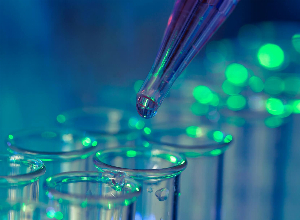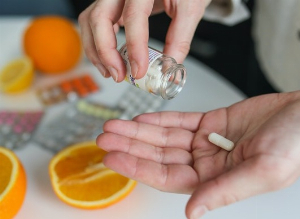Immunology, antibodies and immunoassays: What are they?
Published 16 Mar 2021 • By Clémence Arnaud
Autoimmune diseases are a class of conditions that have very different consequences for the people who are affected by them. Approximately 5-8% of the world's population lives with an autoimmune disease, with a high prevalence in women (8 out of 10 people affected by an autoimmune disease are women).
How are autoimmune diseases defined? What is an antibody? What are immunoassays? For which health conditions do these tests already exist?
We explain it all in our article!

Immunology and autoimmune diseases: definition
The immune system is a network of biological processes that protects us from diseases. In the human body, it is capable of distinguishing what is non-self (foreign) from what is self and of then triggering a response to eliminate potentially dangerous cells. It can also eliminate abnormal cells from the body. This system is composed of two major subsystems: the innate immune system (which reacts with a preconfigured response without the body being aware of of the antigen) and the adaptive immune system (also called the acquired immune system, which reacts with a tailored response to each foreign body by learning to recognize antigens it has previously encountered).
Autoimmune diseases occur when the immune system attacks a person's organs instead of protecting them. The elements of our immune system (antibodies, cytokines, etc.) will cause various lesions of varying severity depending on the disease. More than 80 health conditions are part of this classification, including cancer, rheumatoid arthritis, multiple sclerosis, lupus, etc.
Antibodies
Antibodies (Ab) are proteins whose role is to defend us against attacks on our body, and in particular, against viruses and bacteria. Immunoglobulin G (IgG) is the most common antibody in the human body.
These antibodies, also known as immunoglobulins, are produced by the immune system and in particular by cells called plasma B lymphocytes.
These plasma B cells, in response to the invasion of a foreign body (antigen) into the body, will produce antibodies which attack, neutralise and facilitate the elimination of the antigen in a specific way. Each antibody has a specificity for a particular antigen and keeps it in memory. This means that they can be produced more quickly in the event of a new attack by the same antigen.
In autoimmune diseases, autoantibodies target the individual's own cells. They are not 100% specific to a given disease and cannot be used alone to diagnose the condition.
Principle of immunoassays
These tests look for autoantibodies present in autoimmune diseases, but also in other health conditions.
Immunofluorescence assay (IFA)
This is a standard laboratory technique used to identify the presence of antibodies by their specific ability to react with antigens expressed in infected cells. The specific antibodies targeted are labeled with a compound that causes them to glow an apple-green colour when observed under ultraviolet light through a microscope. This method applies to healthy cells but also to the detection of pathogenic cells.
Enzyme-linked immunosorbent assay (ELISA)
There are multiple types of ELISA test, but the four most common include:
- Direct ELISA: In this method, an antigen is immobilised on a test plate beforehand and a primary antibody with an attached (conjugated) enzyme is introduced, which binds to test antigen. Then, a substrate is added and changes colour in reaction to the enzyme. This colour is proportionate to the amount of antigen.
- Indirect ELISA : In this method, the antigen is present in the sample being tested. A primary conjugated antibody is added and binds to the antigen. An enzyme is then added and the subsequent addition of substrate creates a colour reaction proportional to the amount of antigen.
- Sandwich ELISA: This is the most common type of ELISA test. In this version, two specific antibodies are used to sandwich the antigen.
- the antigen of interest binds to a first immunoglobulin. A second immunoglobulin is added and binds to this antigen. Coloured substrate is added and converted by the enzyme, giving a coloured reaction proportional to the amount of antigen.
Use of immunoassays in screening for some auto-immune pathologies
Testing for colorectal cancer
For people aged 50 to 74 ans, a screening test is proposed as part of a national screening programme. This screening test is to be performed at home, every two years, to look for blood in stools.
If blood is found in the stools, a colonoscopy is performed. It allows diagnosing an early-stage colorectal cancer, or avoiding a cancer by highlighting polyps or adenomas before they turn into cancerous lesions.
Testing in rheumatoid arthritis
In rheumatoid arthritis, auto-antibodies appear several years before the first clinical signs. They are called anti-CCP antibodies or ACPAs.
Biological analyses measure the inflammation markers (sedimentation rate and CRP) and look for these auto-antibodies. Other factors, called rheumatoid factors, are also searched for.
The rheumatoid factor is an IgM immunoglobulin with an activity directed towards G immunoglobulins. It is found in 80% of polyarthritis evolving for several years, but in only 30% of early polyarthritis.
This factor is not specific (specificity of 60 to 80%) to rheumatoid arthritis, meaning it can appear in other diseases. They can be infectious diseases, auto-immune diseases (10 to 20% of lupus patients, >90% of patients with Sjögren's syndrome...) or in elderly people without any specific pathology.
Some teams use the determination of the HLA-DR genotype.
Testing in lupus
This technique searches for antinuclear antibodies present in 99% of lupus through Hep-2 cell based indirect immunofluorescence assay.
Anti-native DNA antibodies are very specific to lupus in particular when at high rates. However, they are not constant, and only present in 50 to 80% of cases.
Anti-soluble nuclear antigen antibodies, or anti-ENA (Extractable Nuclear Antigens) are often directed towards nucleocytoplasmic ribonucleoprotein and are detected using immunodiffusion through immunological footprint. Anti-Sm antibodies are only described in lupus, but they are only present in 10 to 20% of cases.
Anti-Ro/SS-A and/or anti-La/SS-B antibodies are described in 30 to 70% of lupus cases, most particularly when there are skin lesions. They are not specific to lupus because they are also observed in 40 to 70% of primary Sjögren syndrome.
Was this article helpful to you?
Share your thoughts and questions with the community in the comments below!
Take care!
Sources:
- INSERM - Maladies auto-immunes
- SFR - Comment diagnostiquer les pathologies auto-immunes non spécifiques d'organes ?
- Microbiology notes - Elisa
- Institut national du cancer - Dépistage du cancer colorectal
- INSERM - Polyarthrite rhumatoïde
- Université médicale virtuelle francophone - Lupus érythémateux disséminé

 Facebook
Facebook Twitter
Twitter


